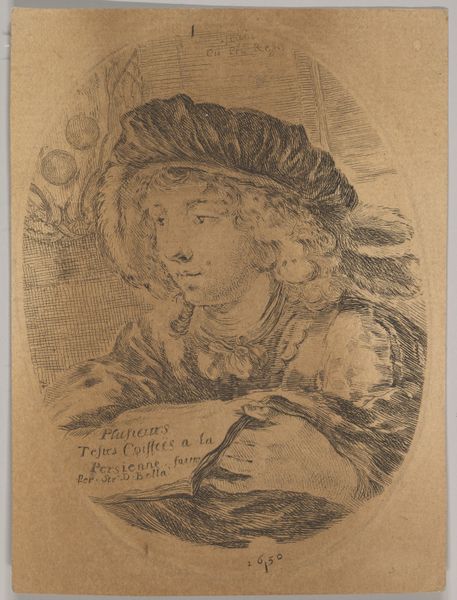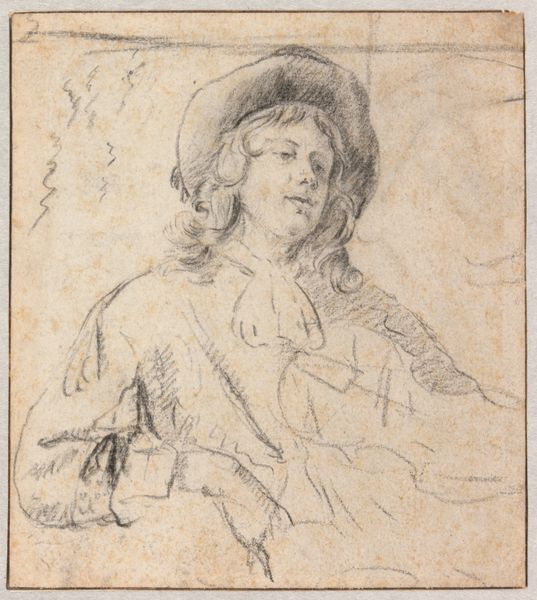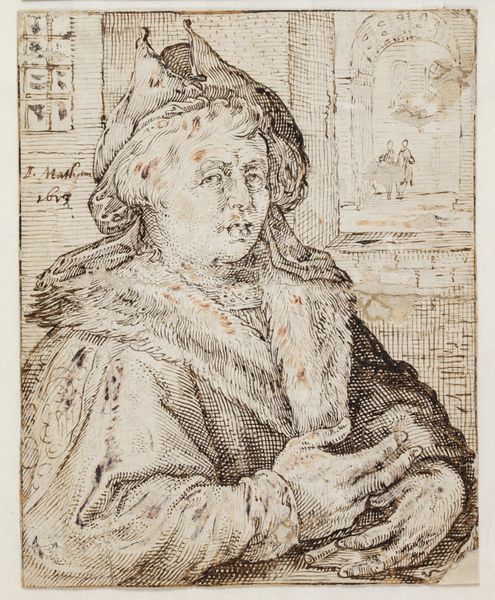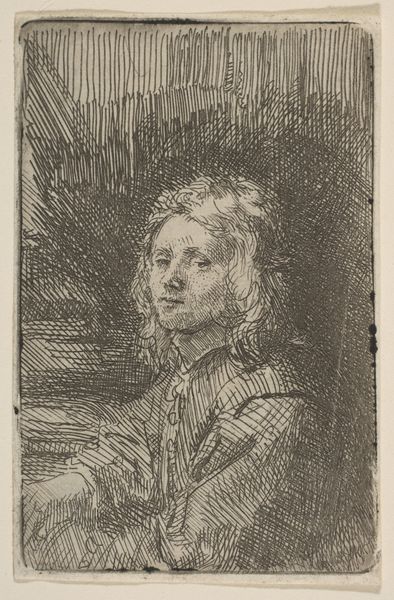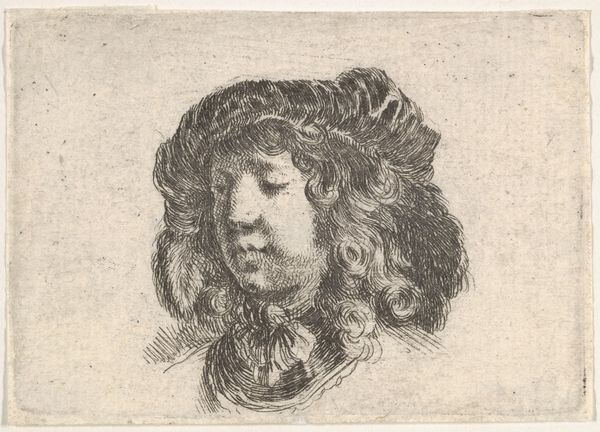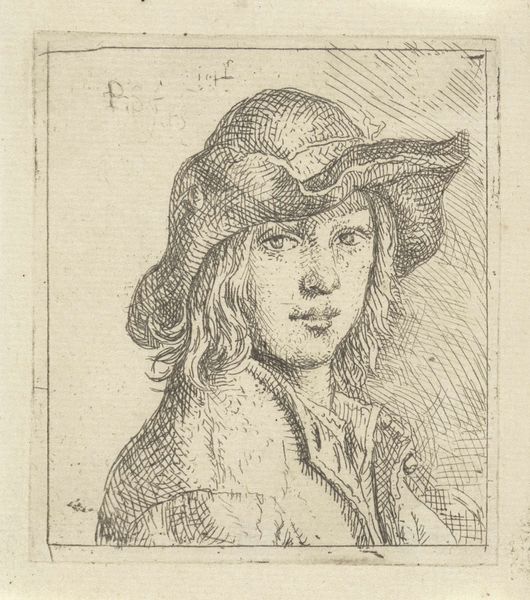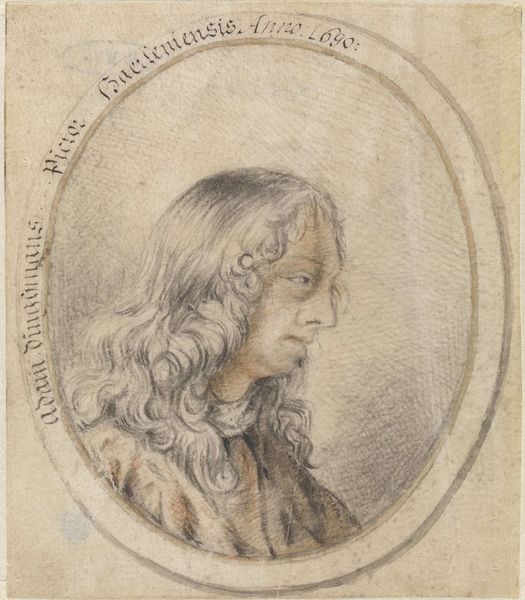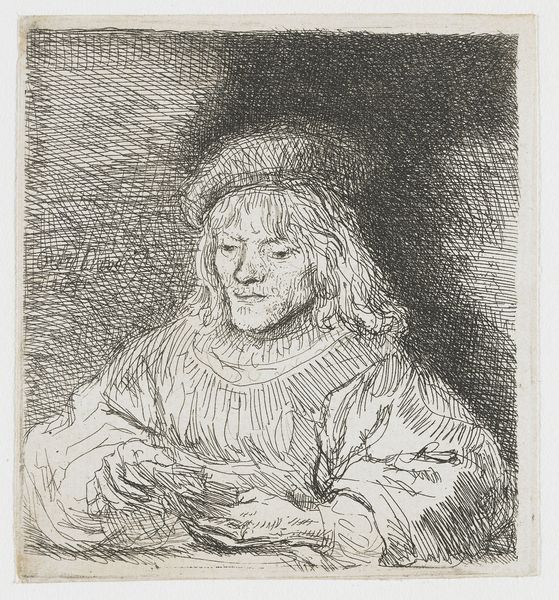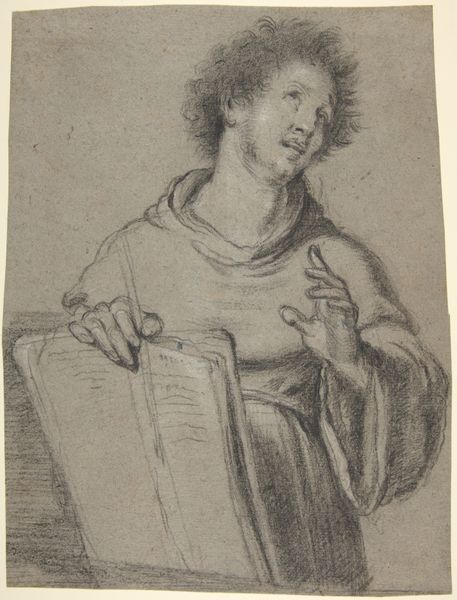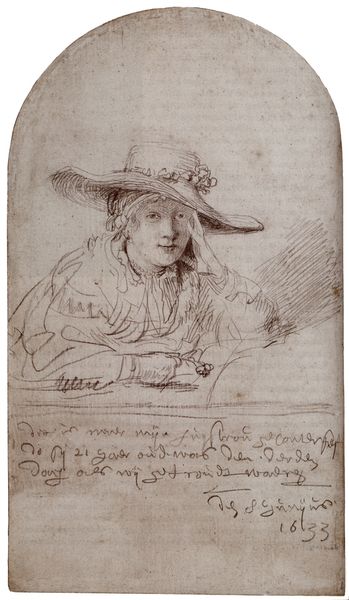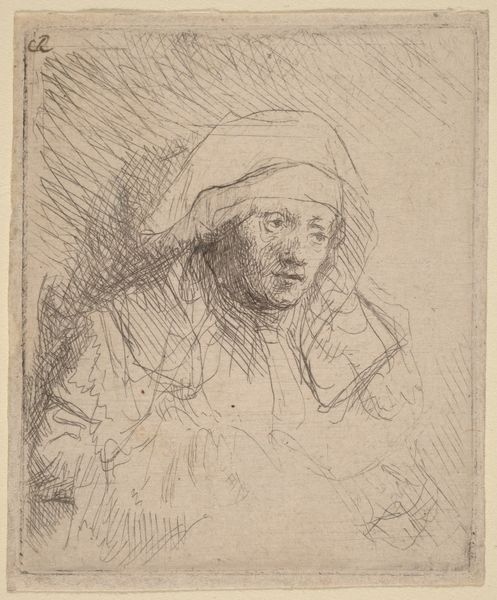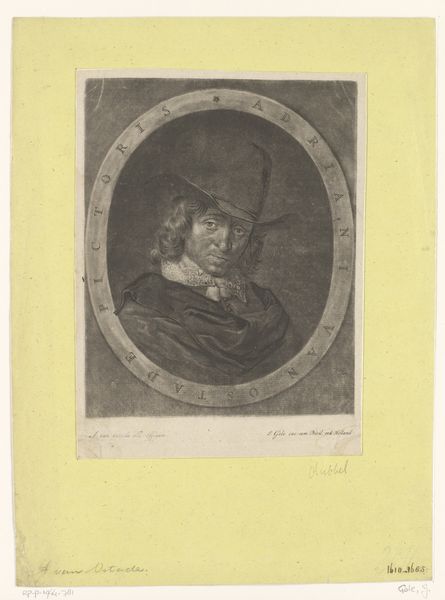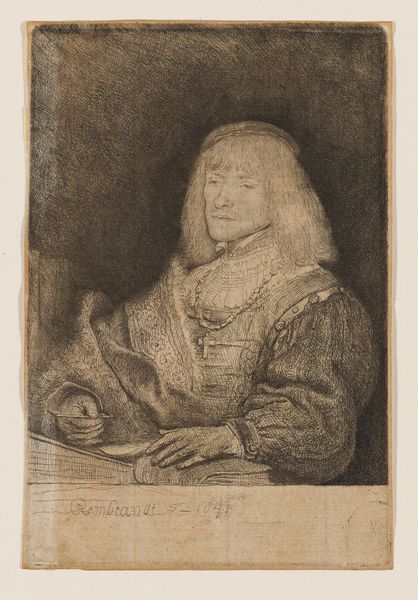
A bust of a young man wearing a cap with feathers, turned three-quarters to the left, the coat of arms of the Grand Duke of Tuscany in top left, title page from 'Several heads in the Persian style' (Plusieurs têtes coiffées à la persienne) 1650
0:00
0:00
drawing, print, etching
#
portrait
#
drawing
#
baroque
# print
#
etching
Dimensions: Plate: 4 × 2 15/16 in. (10.1 × 7.5 cm) Sheet: 4 1/16 × 3 1/16 in. (10.3 × 7.8 cm)
Copyright: Public Domain
Curator: Before us, we have Stefano della Bella’s “A bust of a young man wearing a cap with feathers, turned three-quarters to the left, the coat of arms of the Grand Duke of Tuscany in top left, title page from 'Several heads in the Persian style'," created around 1650. Editor: The etching strikes me as remarkably delicate. Look at those thin, almost tentative lines. It projects an air of fragile elegance, wouldn't you say? Curator: Indeed. There’s a sensitivity to it. Consider the layering of symbols, the soft curls of the young man's hair contrasting with the rigid heraldry in the top left corner. The feathered cap signals exoticism, hinting at broader cultural encounters of the period. Editor: All rendered via the incisive bite of acid on metal. Think about the artisan crafting this copper plate. Each etched line necessitated a physical action, a direct manipulation of material—resulting in this print’s wide distribution. Curator: It also evokes a sense of staged representation, playing with perceptions of identity. The “Persian style” of the title refers not to ethnic representation, but to a stylistic trend and its potential influence, made very clear by the inclusion of Tuscan symbolism. Editor: Right, but look closely at the quality of line and how it creates tone. Note the sheer skill involved in deploying etching techniques, not just as reproduction, but as a distinctly artisanal mode. The textures, and particularly those produced through cross-hatching, are quite compelling. It bridges fine art and craft, highlighting labour often obscured by discussions of "high art." Curator: Yet those very textures you mention serve a symbolic function too. The density of line around the figure’s face draws the eye, internalizing those early modern aesthetic fascinations while, equally, indicating something almost psychologically intense, in the manner of a physiognomic study. Editor: Well, from a purely material perspective, that intensity could just be down to skilled and controlled acid-biting! But I take your point. This intersection of artisanal skill and cultural signalling gives such pieces lasting power. Curator: Indeed. It speaks volumes, revealing artistic intent across continents. Editor: Revealing an era preoccupied with both elegance, symbolism, and new means of production.
Comments
No comments
Be the first to comment and join the conversation on the ultimate creative platform.
